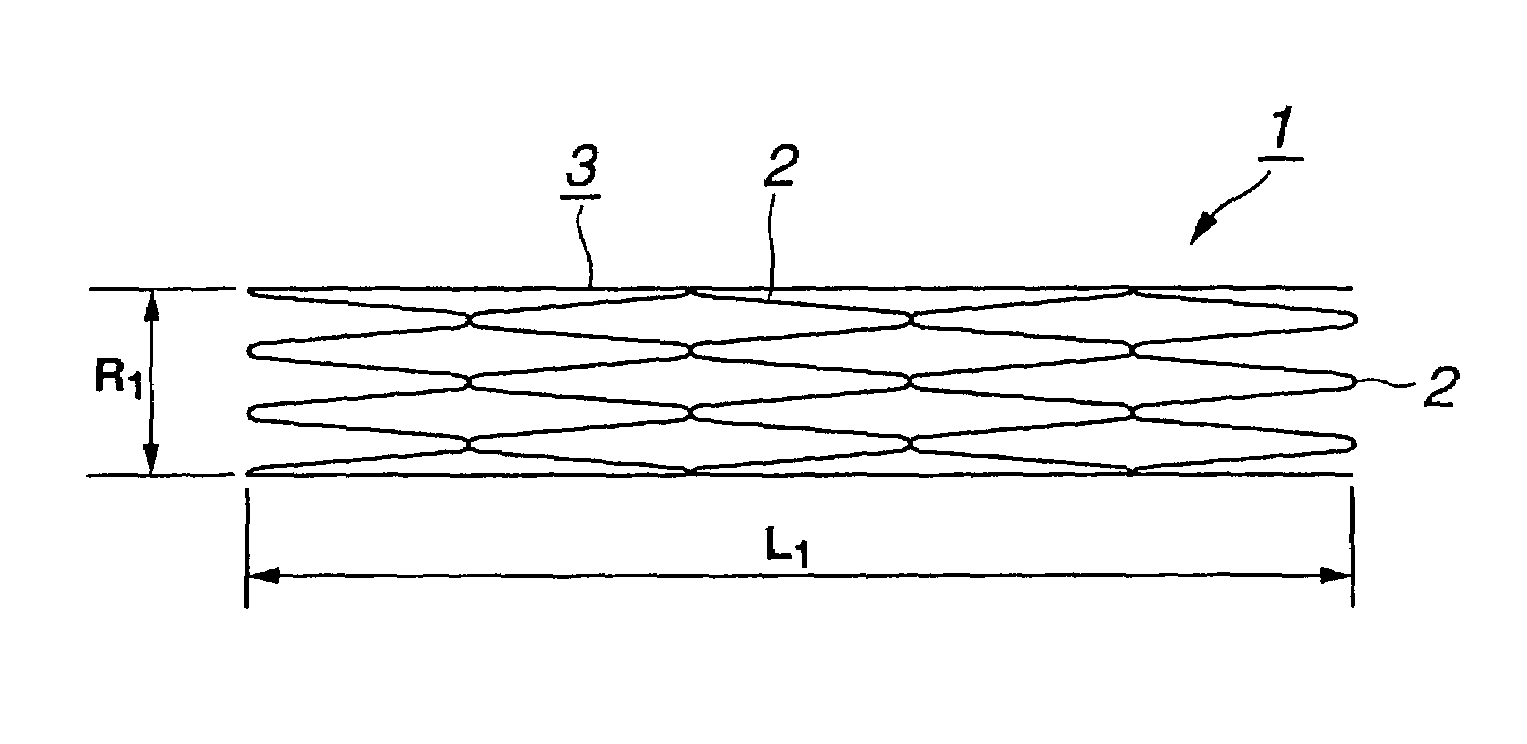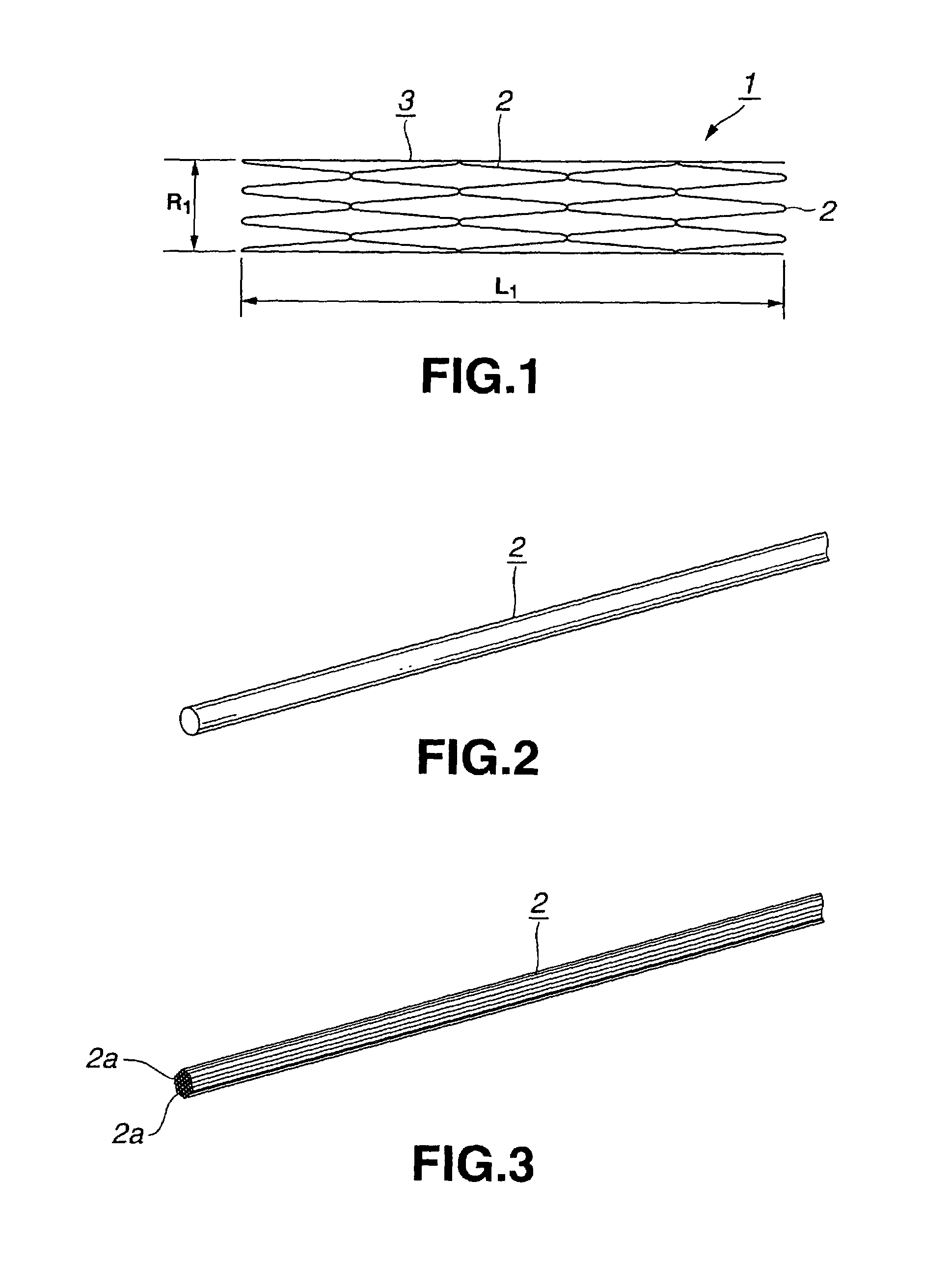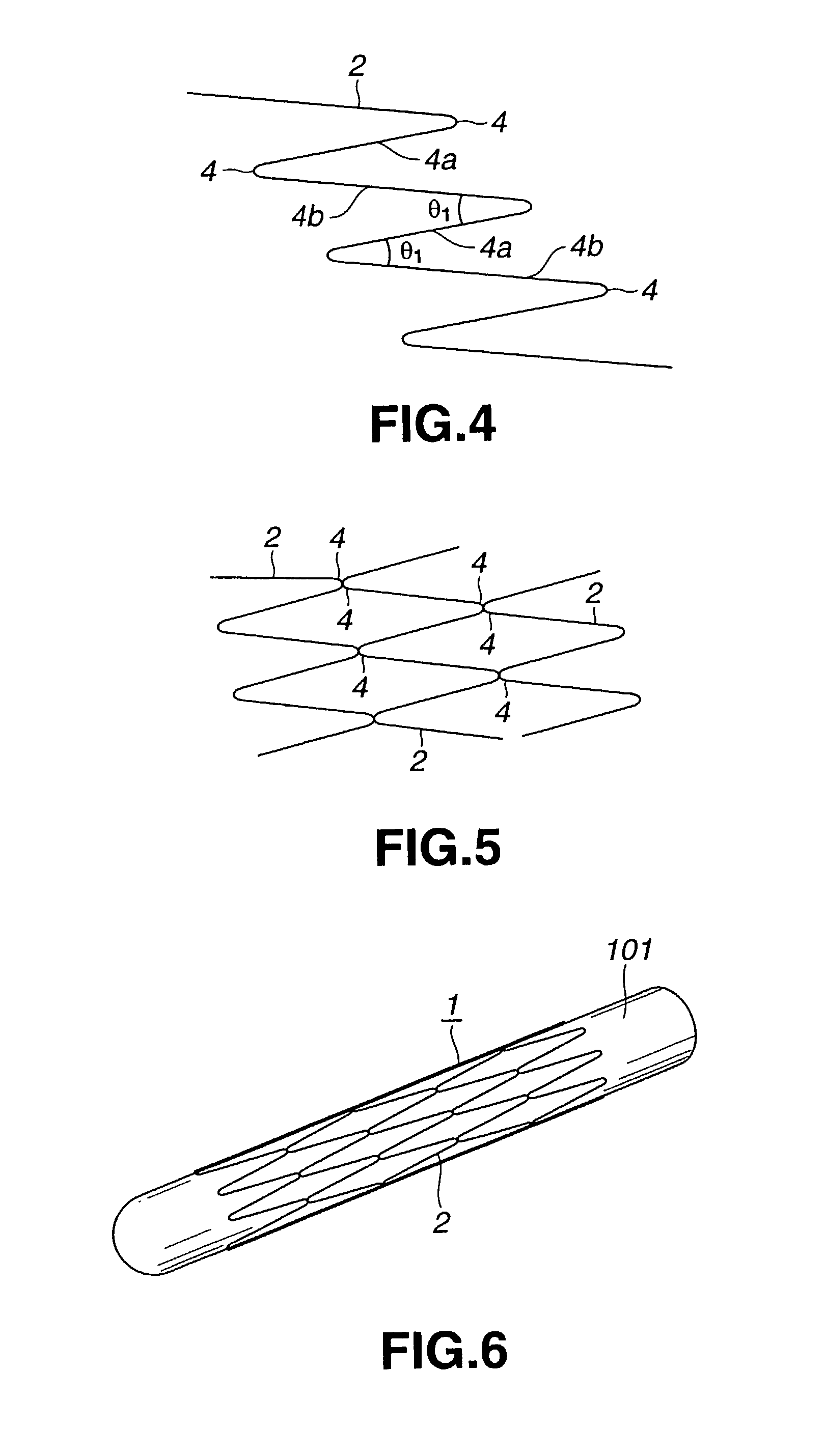Method for manufacturing yarn for vessel stent
a technology for stents and yarns, applied in blood vessels, prostheses, dilators, etc., can solve the problems of stents not being able to reliably support the inner surface of blood vessels, stents are difficult to control precisely, and stents are likely to be expanded excessively
- Summary
- Abstract
- Description
- Claims
- Application Information
AI Technical Summary
Benefits of technology
Problems solved by technology
Method used
Image
Examples
Embodiment Construction
[0042]Referring to the drawings, a stent 1 for the vessel according to the present invention is explained in detail.
[0043]The stent 1 for the vessel according to the present invention is used as it is inserted into the blood vessel such as coronary artery of a living body and includes a tubular main body portion 3 of the stent comprised of a yarn 2 of a biodegradable polymer having the shape memory function, as shown in FIG. 1.
[0044]The yarn 2 is formed of a biodegradable polymer which does not affect the living body when the yarn is implanted in a living body, such as a human body. As this biodegradable polymer, polylactic acid (PLLA), polyglicolic acid (PGA), polyglactin (copolymer of polyglycolic acid and polylactic acid), polydioxanone, polygliconate (copolymer of trimethylene carbonate and glicolid), or a copolymer of polyglicolic acid or polylactic acid and ε-csaprolactone. It is also possible to use a biodegradable polymer obtained on compounding two or more of these material...
PUM
| Property | Measurement | Unit |
|---|---|---|
| Glass transition temperature | aaaaa | aaaaa |
| Temperature | aaaaa | aaaaa |
| Diameter | aaaaa | aaaaa |
Abstract
Description
Claims
Application Information
 Login to View More
Login to View More - R&D
- Intellectual Property
- Life Sciences
- Materials
- Tech Scout
- Unparalleled Data Quality
- Higher Quality Content
- 60% Fewer Hallucinations
Browse by: Latest US Patents, China's latest patents, Technical Efficacy Thesaurus, Application Domain, Technology Topic, Popular Technical Reports.
© 2025 PatSnap. All rights reserved.Legal|Privacy policy|Modern Slavery Act Transparency Statement|Sitemap|About US| Contact US: help@patsnap.com



